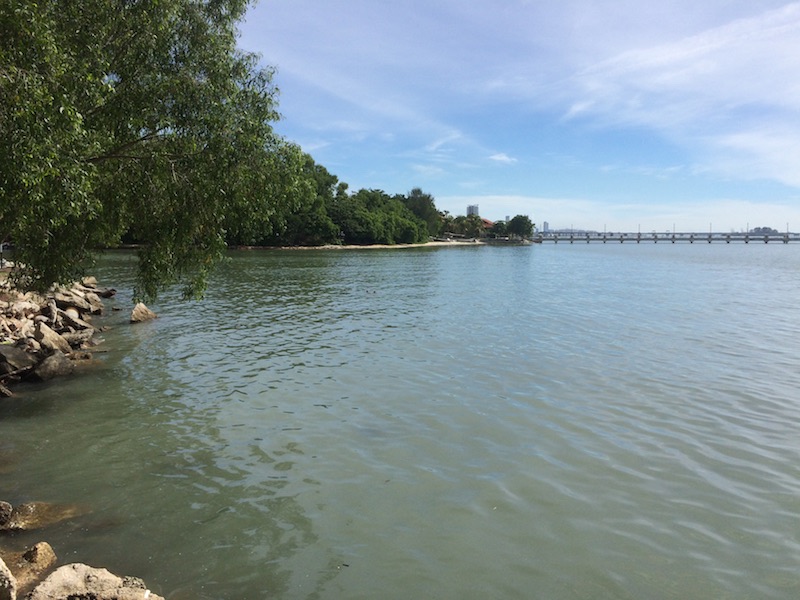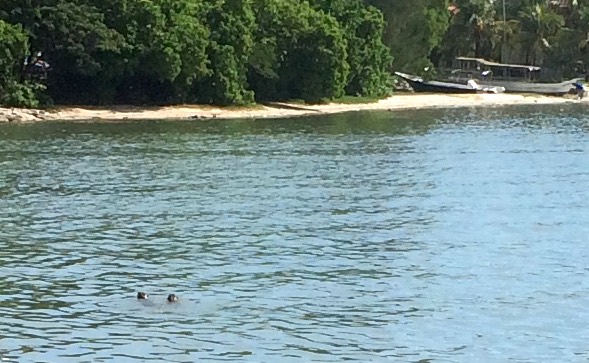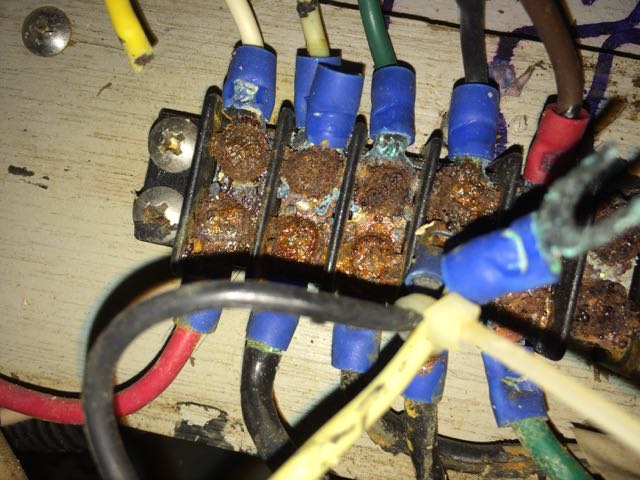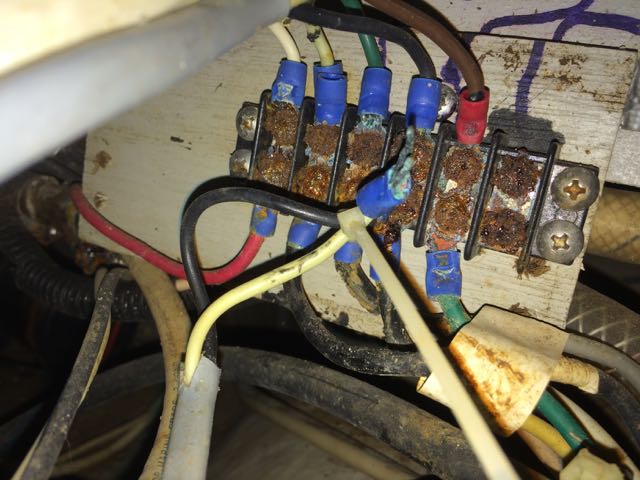Up early to get down to the Queensbay Mall and buy some power tools and food.
 I took a new direction on the walk there and found a lovely spot where I saw some otters, at least I think that’s what they where, they ran from behind a tree and jumped into the sea when they heard me. I took a picture of the coast here and zoomed in so you can see the poor things trying to escape from me. I have that affect on all animals, in fact not just animals ….
I took a new direction on the walk there and found a lovely spot where I saw some otters, at least I think that’s what they where, they ran from behind a tree and jumped into the sea when they heard me. I took a picture of the coast here and zoomed in so you can see the poor things trying to escape from me. I have that affect on all animals, in fact not just animals ….


At the Mall lots of kids were queuing with there parents to go into the Lego thing, I take an interest due to being the winner of a major lego competition back in 1965, (aged 7) where I won the biggest lego set you could imagine, I believe I won the prize because I named the competition lego town “OGEL town”, pretty clever eh!

So taxi back to the boat, I can tell you, you don’t need to visit no gym when your carry 5 litre jugs of water and a stack of other heavy goods up and down pontoons.
After a spot of lunch I started hacking at the mast lighting cables under the floor of the living room, or under the main cabin sole, for the more nautical of you.
 As you can see from the pictures, these connecters were beyond redemption, as where all the cables going into them, most snapped off with a little flexing.
As you can see from the pictures, these connecters were beyond redemption, as where all the cables going into them, most snapped off with a little flexing. Fortunately there was enough slack in the cables to cut them back to useable ends. Now they are all connected up and looking good. All I had to do was wait for sunset, which wouldn’t be long and I could see what was working.
Fortunately there was enough slack in the cables to cut them back to useable ends. Now they are all connected up and looking good. All I had to do was wait for sunset, which wouldn’t be long and I could see what was working.
You probably know this, but being just a few degrees north of the equator the sun sets and rises at pretty much the same time every day, it sets at 7:28 PM and rises at 07:04 AM, 24 minutes longer than 12 hours for the day, I suppose in the middle of winter the day is 11:36 minutes long.
Anyway at 19:30 I popped out to see which lights I had working, and which switches they belonged on. I was very pleased to see I now have an anchor light on the top of the mast, with a tricolour below it. I also have a Spreader/Deck light on the port side, but the Starboard side is dead, along with the steaming light. I bet the steaming light is just a bad connection, as it was showing a low resistance when I measured it, but once I applied power it went open circuit. So it’s just the steaming light that needs fixing, this is a legal requirement, but I will look at the spreader as well when I go up the mast tomorrow. All in all not a bad days work.
I’m planning on having a play with the dinghy and outboard motor tomorrow, if possible I’m going to go out, anchor off the harbour at sunset and try to catch some dinner.
Paul C.

I assume you had to replace the connecting block. Great bit of sleuthing. Salt water and humidity kills electronics, unless you coat the connections.
Hi Bruce, yes that block was too far gone, the one in the anchor area cleaned up fine. I think that’s the worst of it now, but will be working through all the other wiring bit by bit as we go along.
Hi Paul, one other thing you might want to consider, is putting some sort of sealed, lead-acid battery up at the bow for the bow thruster and the windlass. It would still be connected to the rest of the system, but it helps alleviate the power loss between the windlass at the bow and the battery banks (which are probably close to the engine). You could get really fancy and add a voltage-controlled relay between the two so that normally the windlass and bow thruster battery is isolated from everything else unless the house batteries go above 13v (meaning there’s an external power source). It’s extra weight up front, but it’s worth it, I think.
Hi Dermot, I used to think that was a good idea too, but then I read an article by Nigel Calder, I think it might be in his book on boat maintenance, where he does the maths and shows that it’s not a great idea. I can’t remember the details, but I think it was based on the fact you would need more than one battery, and in order to get the charge back into it efficiently, you would need massive cables anyway. I think it’s very much swings and roundabouts. I do plan at some point to see just how much of a voltage drop I’m getting as the currents are incredible. Regardless it certainly seems to move the bow around here in the marina.
That surprises me. I must dig out his tome, as I haven’t read it in a while, and I probably need to refresh a lot of knowledge before I pick up Nikea and those impeller fragments cause the anticipated chaos.
I tend to think of batteries as a form of capacitor. Adding a capacitor at the end of the resistance (long cables) acts as a low-pass filter. It should deal nicely with the power spikes of the electric gear up at the bow. The bow thruster probably takes around 50A for 1 minute of use or just shy of 1Ah. If you use it once an hour, you’ll need an amp to restore the lost charge, not counting the battery inefficiencies. This also doesn’t take into account the fact that motors have an inrush current which can be enormous.
4/O cable (diameter 11.6mm, maximum current rating of 300A) has a resistance of a mere 0.16 ohms per km (and I’m guessing your boat is less than 1,000m from bow to batteries!), assuming a 10m run, then you’re looking at 0.0032 ohm (there and back) resistance, and a possible voltage drop of 0.16 volts, which isn’t too bad. I think the guideline is 3% and that’s 1.28% so it’s fine.
But the inrush current is a different story. I’ve seen some specs which list the bow thruster current at 350A, which is higher than 4/0 cable can manage. But that’s probably the initial current they’re quoting. The problem is, at 350A and a resistance of 0.0032 ohms, the voltage across the bow thruster is now reduced by 1.12 volts. If your main battery isn’t in great shape, say it’s less than 12 volts, that can be the difference between the thruster spinning up and not spinning up.
I must go and pull out the Calder book, because if there’s one thing more certain than death and taxes, it’s that Nigel Calder knows his stuff.